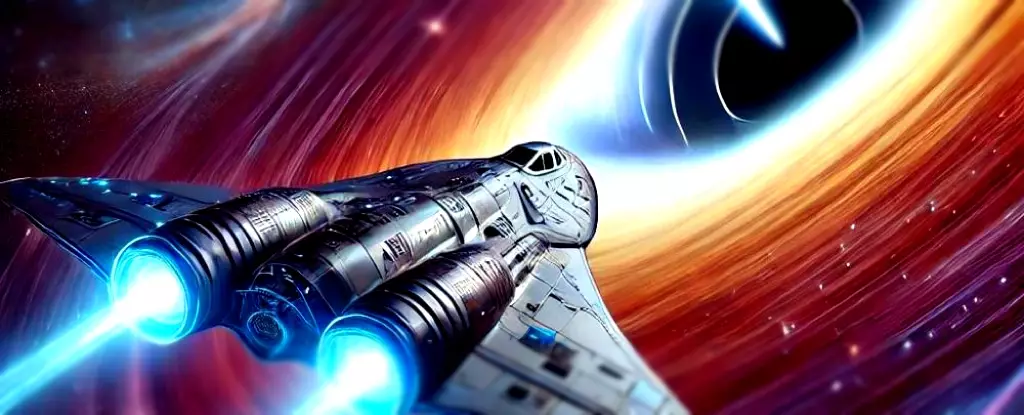The concept of warp drives has been a staple in science fiction for many years, popularized by shows like Star Trek. The idea behind warp drives is to enable spacecraft to travel faster than the speed of light, thus making interstellar travel feasible. However, the feasibility of warp drives in reality is still a topic of intense debate among researchers.
One of the major challenges of creating a warp drive is the immense amount of energy required to generate a warp field. The energy needed to power a warp drive is thought to be beyond our current capabilities, leading to the need for exotic forms of matter like “unobtanium”. Additionally, the creation of a warp drive may contradict our current understanding of the laws of physics governing spacetime.
In a recent study, researchers Remo Garattini and Kirill Zatrimaylov explored the interaction between warp drives and black holes. They theorized that a spaceship with a warp drive could potentially survive inside a Schwarzschild black hole, provided it crossed the event horizon at a speed lower than that of light. The gravitational field of the black hole could decrease the negative energy needed to sustain the warp drive, opening up the possibility of creating mini-warp drives in a lab setting.
Potential Implications
The research conducted by Garattini and Zatrimaylov suggests that the interaction between warp drives and black holes could have far-reaching implications. For instance, it could lead to a better understanding of the thermodynamic properties of black holes and the creation of mini warp drives in controlled environments. However, many questions and challenges remain, especially regarding the theoretical implications of warp drives on the entropy of black holes.
Future Possibilities
While the idea of warp drives and black holes may seem like science fiction, ongoing research in this area could one day lead to groundbreaking discoveries. Understanding the quantum mechanics behind black holes and warp drives could potentially revolutionize our understanding of spacetime and open up new possibilities for interstellar travel. As researchers continue to explore the intersection of warp drives and black holes, we may one day unlock the secrets of the universe and make seemingly impossible technologies a reality.


Leave a Reply